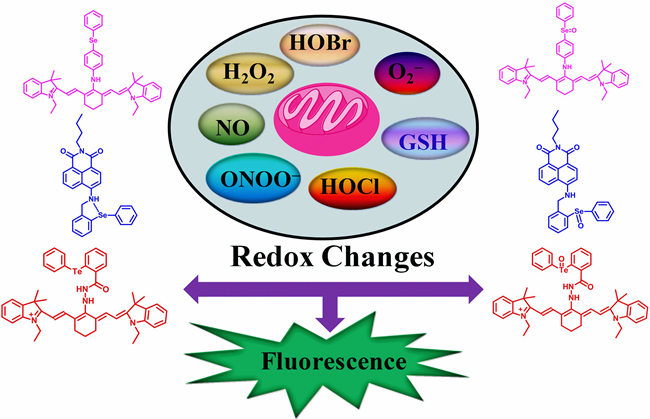A series of fluorescent probes for intracellular redox change via mimicking the active center of Glutathione Peroxidase (GPx) developed by the group of Profs. Ke-Li Han from the State Key Laboratory of Molecular Reaction Dynamics at Dalian Institute of Chemical Physics have captured greater researchers’ attention. Recently,a review article entitled "Redox-Responsive Fluorescent Probes with Different Design Strategies" has been invited to publish in Accounts of Chemical Research (Acc. Chem. Res. 2015, 48, 1358-1368. http://pubs.acs.org/doi/abs/10.1021/acs.accounts.5b00009).

Intracellular redox homeostasis governs numerous essential biological processes and presents broad implications in human health and diseases. Given the properties of high chemical activity and short half time, Reactive Oxygen Species (ROS) involved in the intracellular redox balance are difficult to be detected. In these regards, the elucidation of the biological functions of intracellular redox changes between ROS and antioxidants has become an important area of research. Fluorescence imaging presents the advantages of higher sensitivity, better selectivity, greater convenience, and less invasiveness compared with other approaches, and has thereby been considered to present a potentially powerful methodology for studying various species in biosystems. Recently, Profs. Han group have designed and synthesized a series of fluorescent probes for redox changes in biological systems Relying on the active center of GPx. Most of these probes exhibit high sensitivity and good selectivity, absorb in the near-infrared, and respond rapidly. And these works have been published in J. Am. Chem. Soc.、Chem. Commun.、and Phys. Chem. Chem. Phys.. This Account highlight related research progress on fluorescent probes for intracellular redox change, primarily from Profs. Han group. In this article, they present an overview of the design, photophysical properties, and fluorescence transduction mechanisms of reported molecules that probe redox changes. This is the first review on small-molecule fluorescent probes for intracellular redox change, and this account would provide a basis for designing available fluorescent probes and do a favor to those who are interested in this continually growing research field. (By Zhangrong Lou)